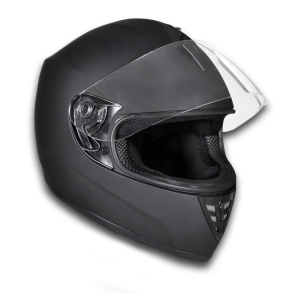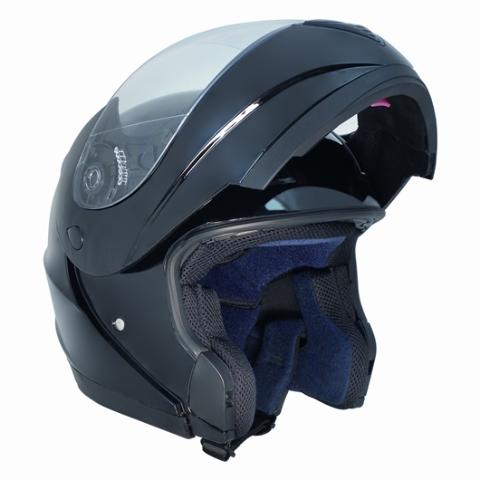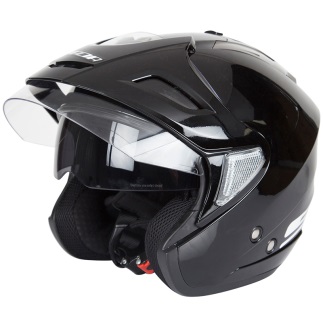A review of 61 international studies shows that wearing a motorcycle helmet reduces the risk of a fatal motorcycle crash with approximately 42%, and the risk of severe head injury with about 69% [33]. Since 1972, it is mandatory for motorcyclists in the Netherlands to wear a helmet. This mandatory helmet use was generally accepted after its introduction and most motorcyclists comply with it.
Approval requirements for motorcycle helmets are laid down in European Regulation ECE R22-05, in which minimum requirements are laid down for shock absorption, penetration resistance, stiffness, protruding parts, surface friction, chin strap and risk of detachment in a crash.
KNMV examined whether there are differences in head injury when using different helmets (see Figure 4): full-face helmet, modular (flip-up) helmet, and open face helmet [34]. The injuries of motorcycle riders wearing the three helmets were similar, but a closed helmet had a small advantage over a helmet which leaves the face free, such as the open face helmet. While wearing closed helmets, crashes more frequently resulted in bruises to the neck and whiplash, and while wearing an open helmet crashes more frequently led to injuries to head and face.


 Figure 4. A full face helmet (left), a modular (flip-up) helmet (middle) and an open face helmet (right).
Figure 4. A full face helmet (left), a modular (flip-up) helmet (middle) and an open face helmet (right).
